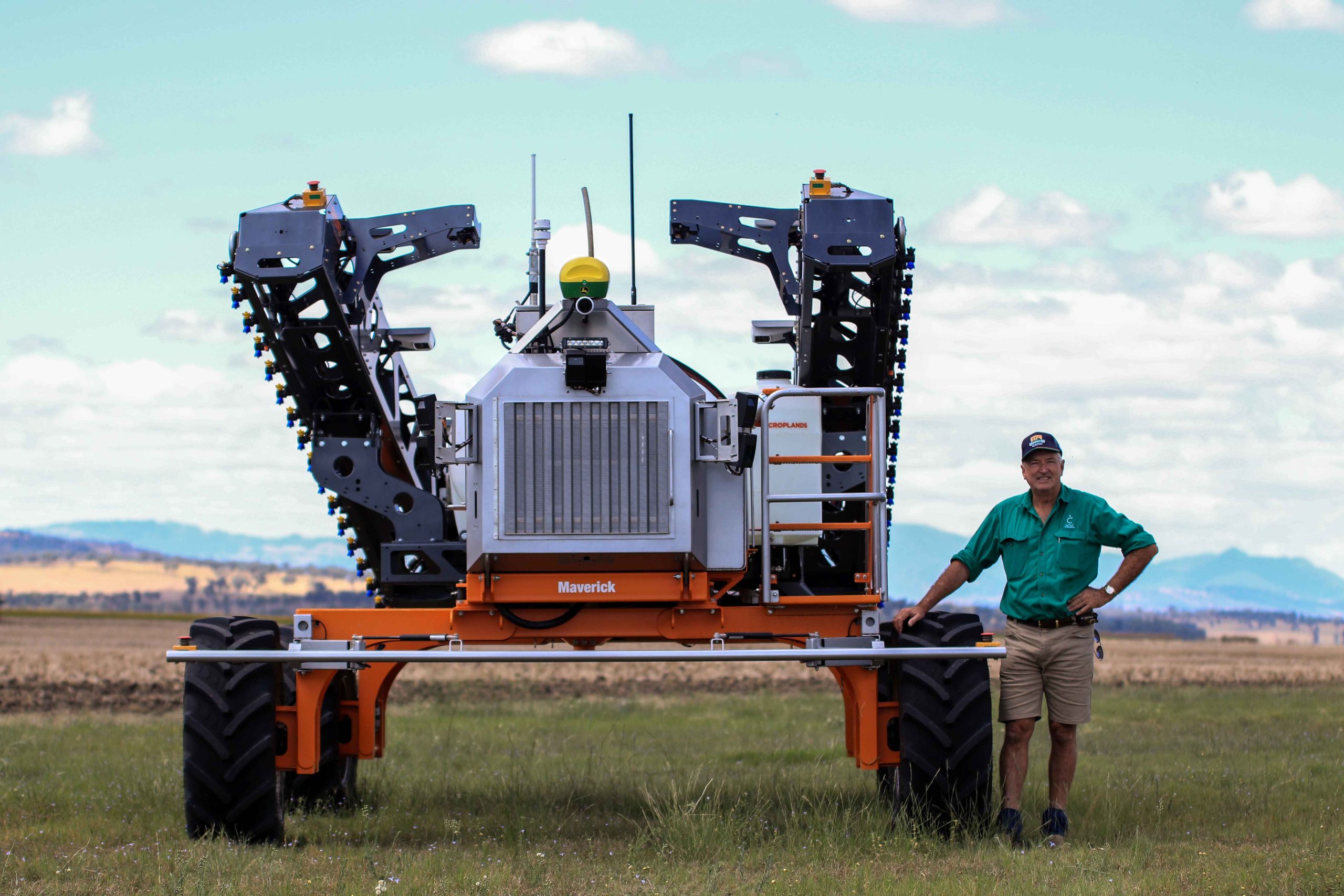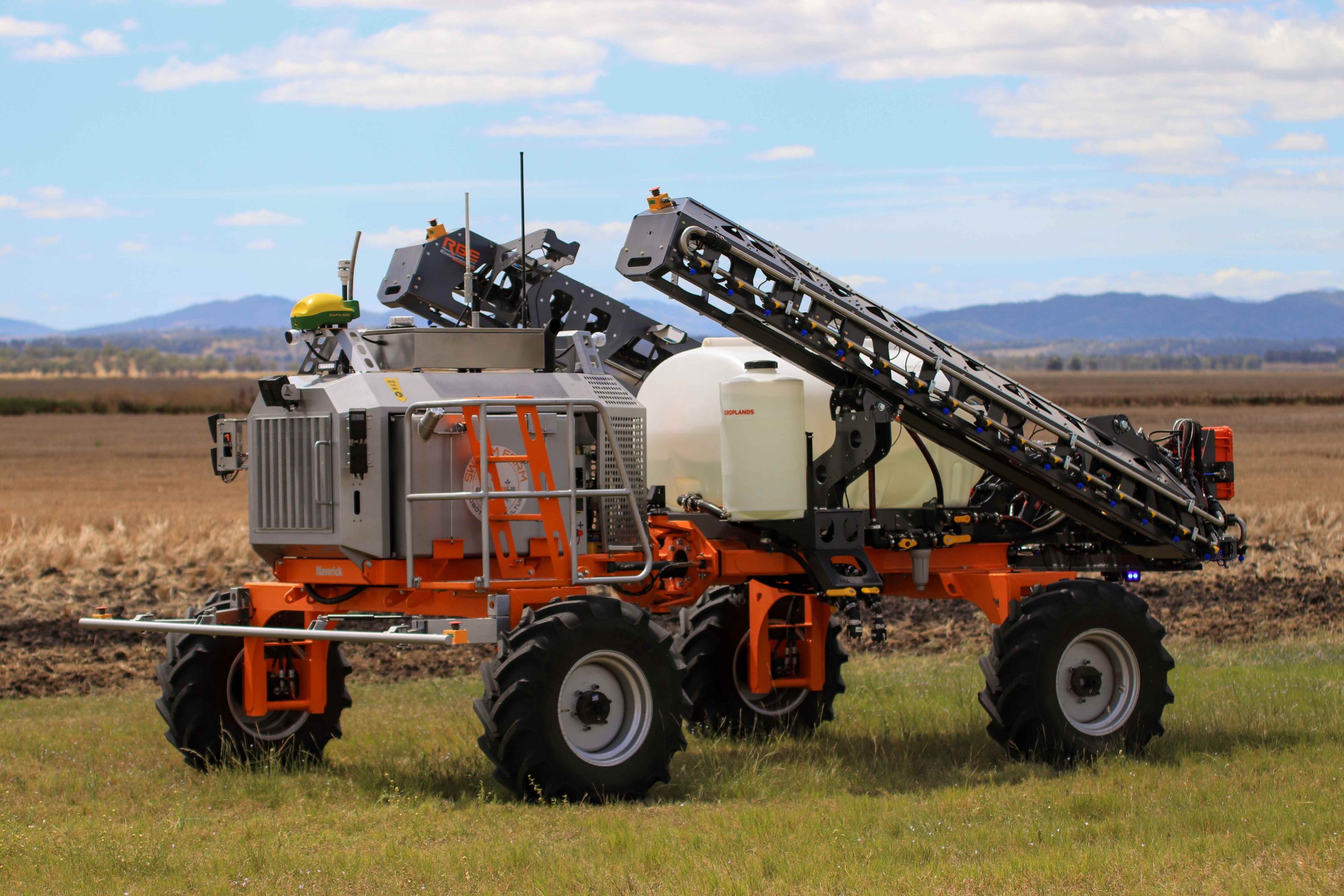Swarm Farm robotics leading the charge in on-farm automation technology across Australia and seen in action on the Liverpool Plains.
Story and photography by Jessica Rea
The rate of advances in technology in our society is the fastest it has ever been. We see these advances in action every day on-farm and in the paddock, in Weed-It cameras and spray drones, farm mapping on a smartphone and in Swarm Farm robotics.
The journey for Swarm Farm began in 2012 with a clear vision, to create better farming systems and drive forward autonomous agriculture. Using their own farming operation in Central Queensland, they partnered with two universities to develop early prototypes. In 2014, the first Swarm Bot came to be, then a three wheeled, single drive machine weighing around 300kg.
Today, Swarm Farm technology is readily available and operational on farms across the country. Proving particularly useful in the current labour shortage crisis facing many farms, we spoke to Liverpool Plains growers to see how the Swarm Farm robot is assisting in their farming operations.
An early adopter of the technology on the Liverpool Plains of New South Wales was Ian Carter on his property, Connamara, located near Pine Ridge. Here, Ian and his employees work 6000 acres of country growing a crop rotation of wheat, barley, sorghum and cotton. After keeping a close eye on the emergence of the Swarm Farm technology in self-propelled sprayers, Ian thought 2023 was his year to invest.

Ian Carter on farm at Connamara, Liverpool Plains NSW
Early on in the adoption of this new technology, getting it up and running was a task that had to be adopted diligently and methodically. The entire farm had to be mapped and geo-fenced, giving the Swarm Farm robot accurate data for its daily operations. Mapping included field boundaries, run lines, farm roads, obstacles and docking points. With no physical controls on board, accessible only via a connection to a smartphone app, the accuracy of the farm mapping was paramount. A nudge bar at the front of the robot acts as the final line of defense in collision avoidance. The Swarm Farm robot delivered to Connamara was fitted with height sensors in the middle of the boom to assist when traversing uneven terrain. Each Swarm Farm robot delivered on farm can be custom fitted to suit individual farming operations, building upon the standard fit out of the robot.
Initial investment into this technology for Ian came about when his existing self propelled sprayer was already in need of an upgrade. Added to this was the impact of a growing labour shortage issue in the agricultural sector, meaning seasonal workers were harder to source. The Swarm Farm robot, fitted out with Weed-it cameras can spot spray day and night. An on board weather station feeds data about impending weather to the robot which will make a decision regarding operations within pre-set perimeters. If weather is deemed outside of these perimeters, the robot will park itself at a pre-assigned spot.
Providing the robot has the chemical and water capacity to continue in its operations, it will run along a pre-set list of paddocks to spray out. The ability to fully automate this time consuming task on farm has freed up Ian’s team at Connamara to complete other pressing tasks across the farm.
The Swarm Farm robot has now been operational at Connamara for a few months, completing a fallow spray in that time. Operating at slower speeds than earlier machines means that the Weed-it camera on board has been able to detect much smaller weeds in its spot spray.

The on board water capacity of the unit is 1500L, meaning the set up is more suited for spot spraying. The entire unit is much lighter than traditional self propelled units, which typically weigh around 15 tons. The Swarm Farm robot and sprayer at Connamara comes in at just 4.5 tonnes, fully loaded. From this, Ian and his team saw less damage to paddocks in the form of wheel tracks.
The ability to run the Swarm Farm unit autonomously in the paddock has led to a changing agronomic approach from Ben Leys, the Pursehouse Rural Agronomist at Connamara. Bringing years of experience to the paddock, Ben has also been closely following the advances in spray technology brought forward by the availability of the Swarm Farm robot. Taking a proactive approach to weed control, the unit has the ability to run day and night, docking and refilling on its own. Weeds are eradicated early due to the readily available spray unit.
Ben, along with the entire agronomy team at Pursehouse Rural, have utilised their years of experience to work closely with farmers who are adopting new technologies in the paddock. When it comes to Ian and the Swarm Farm robot at Connamara, Ben has worked closely with the Carters to tailor their agronomic program to their changing operations on farm. Dabbling in new chemistry and beginning to become less reliant on glyphosate for weed control are just two small ways in which Ian, alongside Ben, are starting to change their approach to fallow spray.
The advent of any new technology in the agricultural industry is an exciting time for everyone involved. The accessible nature of the Swarm Farm robotics is driving change on farms across the Liverpool Plains, moving towards greater autonomy in spraying applications.
